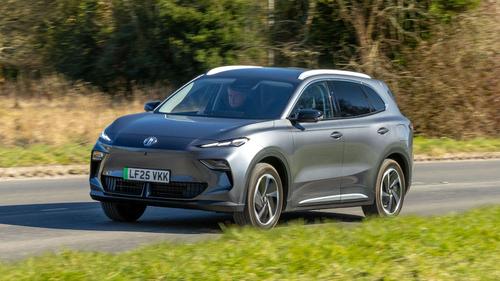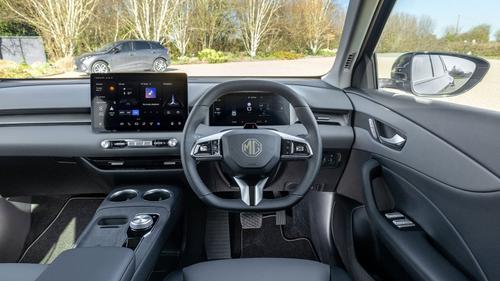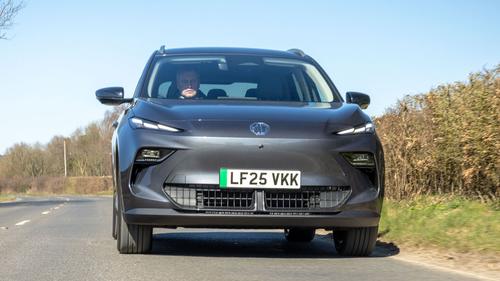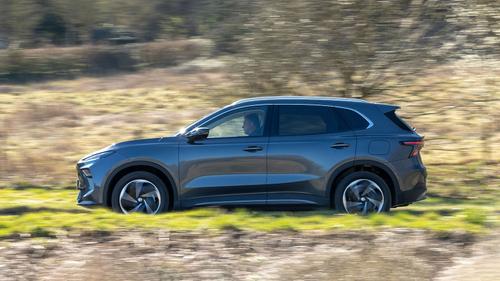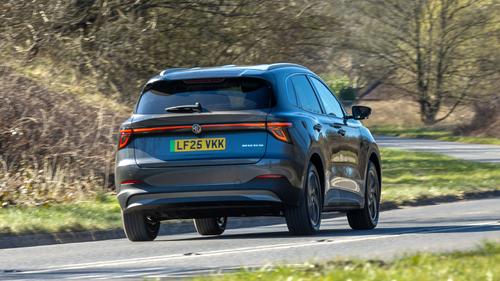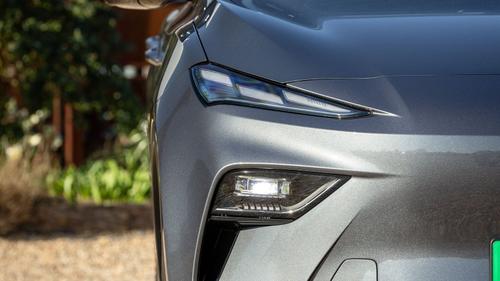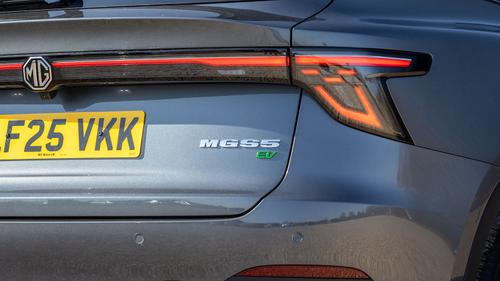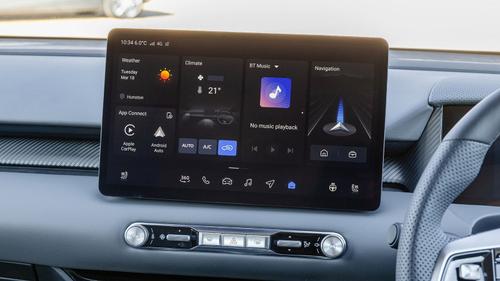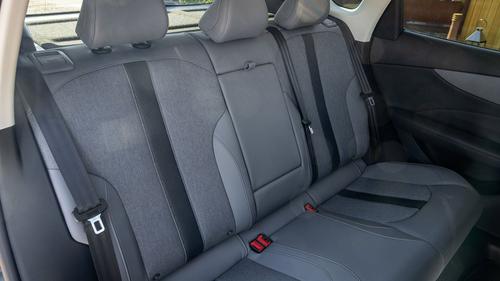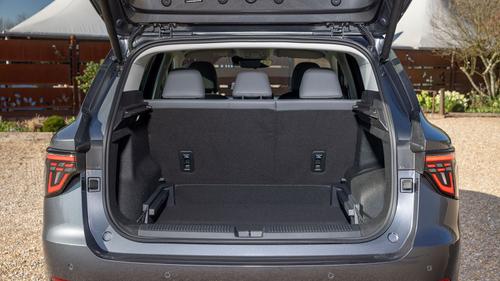
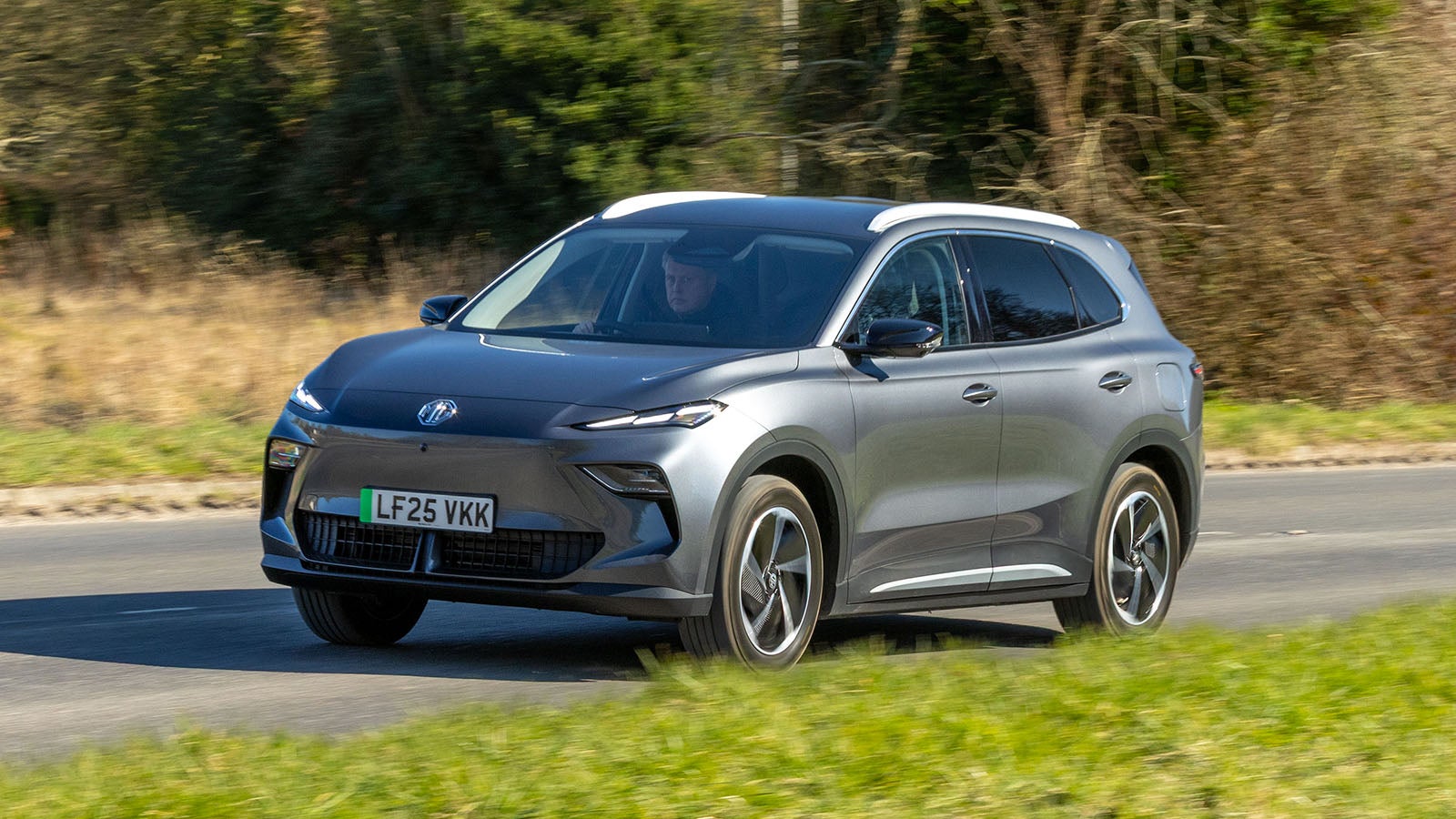


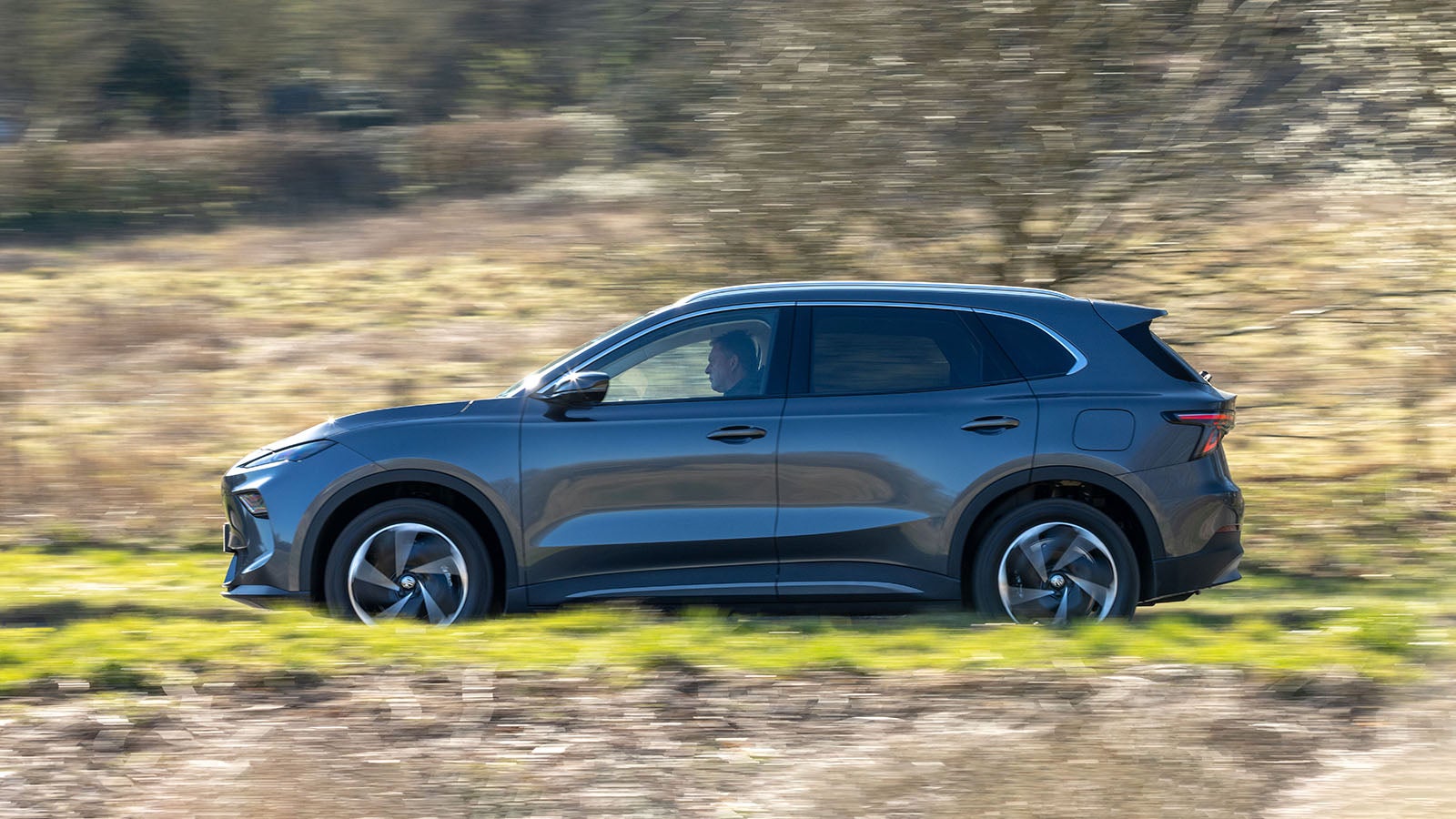




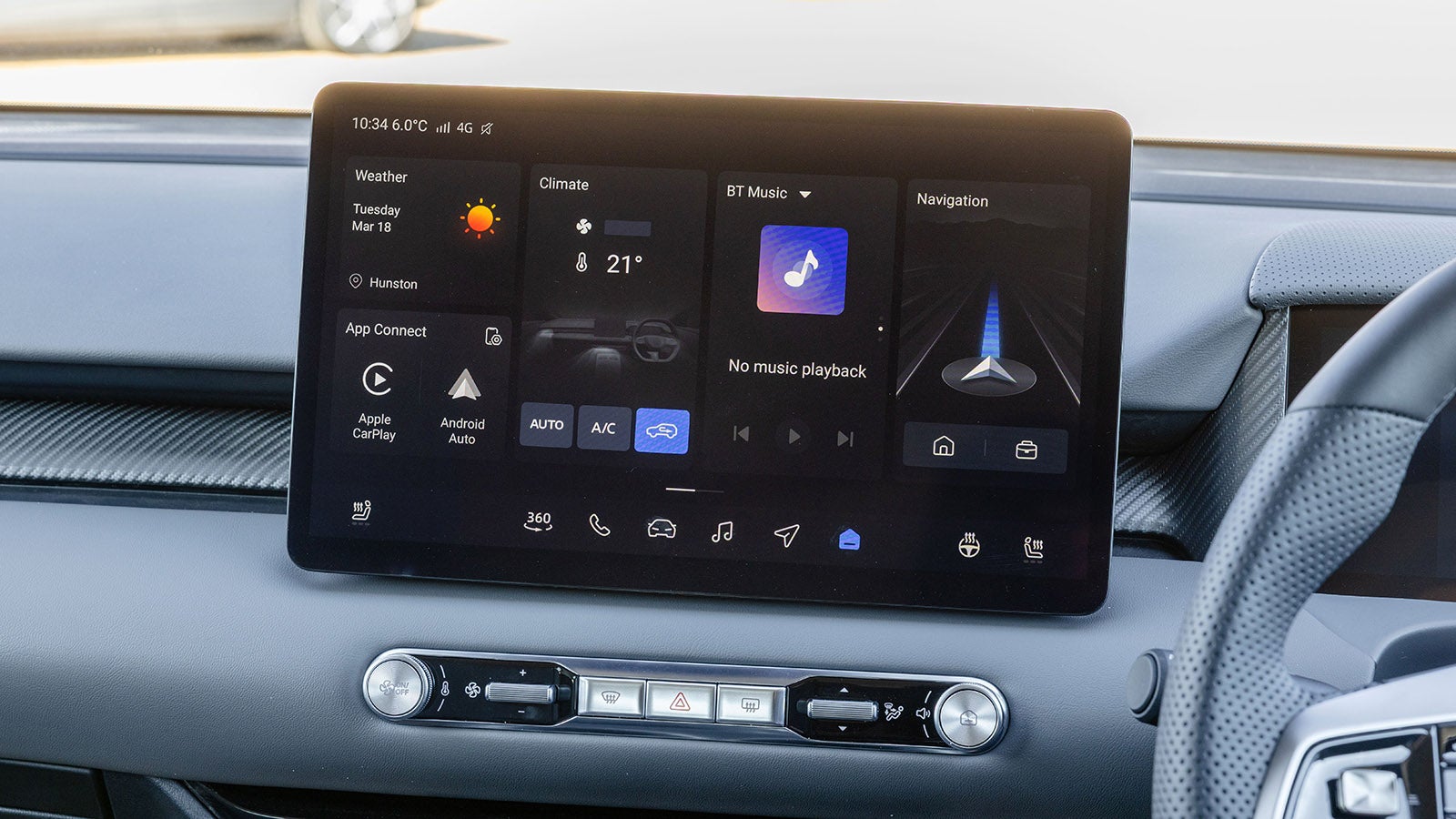


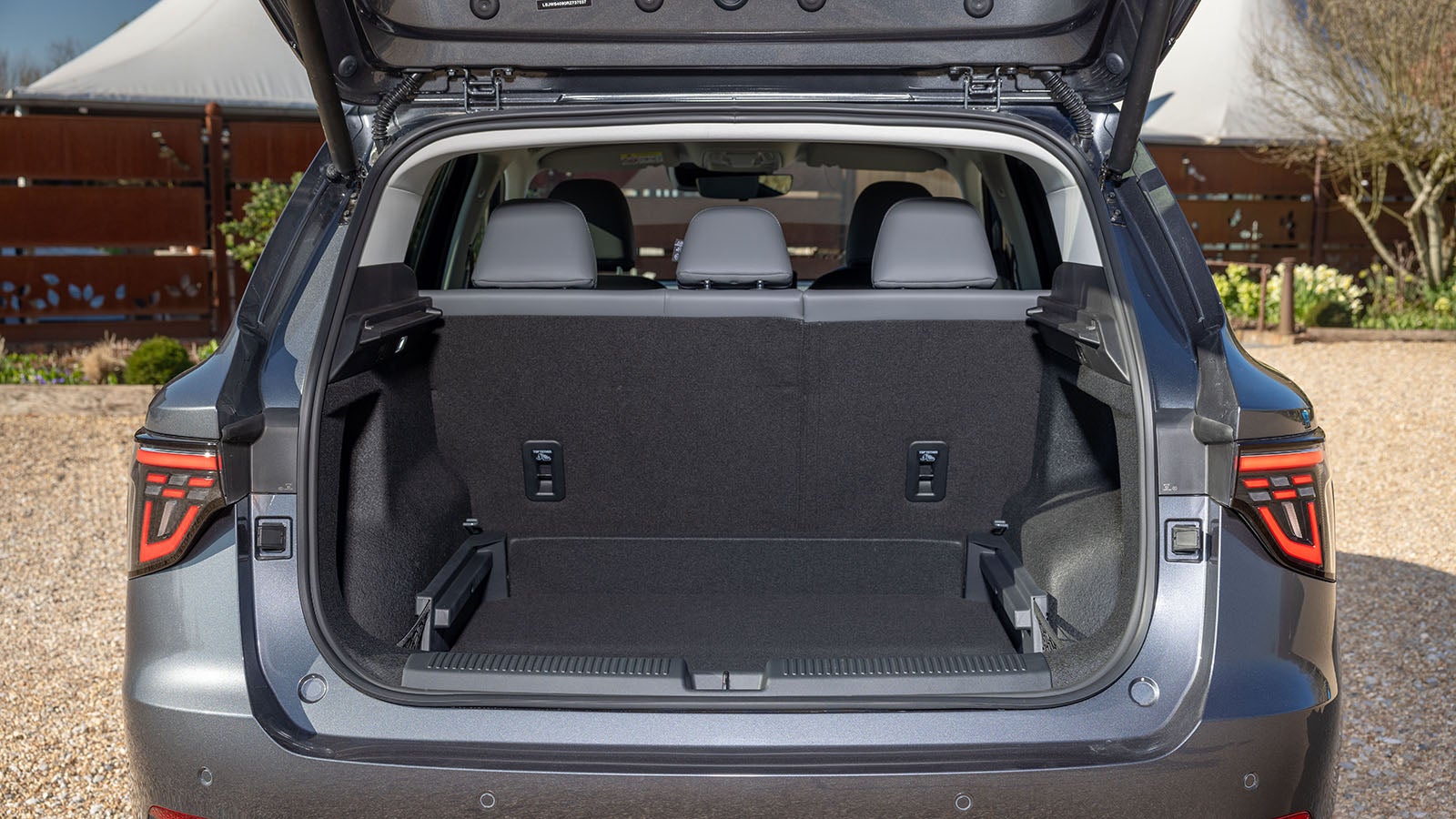
MGS5 EV review

While the 'MGS5 EV' name is a bit fussy, this is an electric family SUV that works hard to keep things simple. There's just two battery choices and two trim choices, and the only option you're offered is what colour you'd like.
It's the fifth electric model from the brand and the second to be based on its pure-electric MSP platform, following the MG 4 hatchback. It's up against stiff competition like the Kia EV3 and Skoda Elroq, so keep reading to see which battery-powered family hauler is best for you.
- Easy, predictable handling
- Well equipped and well made
- Price undercuts key rivals
- Slightly bouncy ride quality
- Some fussy infotainment features
- Styling is a little bland
Should I buy an MGS5 EV?
Measuring in a little under 4.5 metres long, the MGS5 EV lands in the middle of the ultra-competitive family SUV class. That gives it a broadly similar footprint as electric rivals like the Kia EV3 and Skoda Elroq, plus conventional models like the Kia Sportage and Nissan Qashqai. Tellingly, the MG has a longer wheelbase than its petrol-powered rivals – a benefit of its purely electric platform – which should translate to some extra passenger space between the axles.
"While you won't be doing smokey drifts around roundabouts…you do sense that the car has impressive poise compared to some less dynamic rivals"
Beauty is, of course, in the eye of the beholder, but we're struggling to conjure much enthusiasm for the way the MGS5 EV looks. It has pointed daytime running lights at the front and back with chequered flag details, while the headlights themselves sit inside air vents mounted lower in the bumper. There's no front grille to speak of – EVs don't need as much cooling as fuel-powered cars – but we feel the front end lacks a strong identity, which isn't something we felt about its platform mate, the MG 4.
That said, the MGS5 EV isn't a flashy car and should be good at flying under the radar – not least because of its hushed electric powertrain. As you spend more time with the car, this character trait becomes more obvious. Everything from the controls, to the dashboard, to the infotainment features are designed to be straightforward and intuitive. Unlike more idiosyncratic cars – like the Tesla Model Y, for example – you won't find yourself having to 'learn' your way around the MGS5 EV, with almost all functions obviously marked and in the exact place you'd expect to find them.

Perhaps the most obvious example of MG making the car easier to get on with is the reintroduction of physical knobs and buttons for the climate control system. This was something we complained about on the smaller MG 4 – using the fiddly infotainment system for climate adjustments – and MG's now given us a proper panel of clearly marked controls that can be set easily with barely a glance away from the road.
MG's big advantage in the UK is the fact it can undercut its main rivals on price thanks to the economies of scale unlocked by its Chinese parent, SAIC. Entry-level SE models are £28,495 at the time of writing – about £3,000 less than the Skoda Elroq and £4,500 less than a Kia EV3 – although the MG does come up a little short for performance and range. Jump up to £30,995 and you get a larger battery and a more powerful motor, making up those on-paper deficits while still undercutting its entry-level rivals. Top-spec Trophy models are £33,495, gaining features like faux-leather upholstery, a powered boot lid, and electrically adjustable heated front seats.
What's possibly more relevant to Motorpoint readers is how affordable the MGS5 EV will be as a nearly new car. Recent examples of its predecessor – the MG ZS EV – are already on sale with discounts of nearly 50% after just 18 months. We anticipate the MGS5 EV will enjoy similarly competitive pricing once it arrives at our stores. Combined with the ultra-low running costs available if you can charge your EV at home, this is a family car that'll leave minimal impact on your wallet.
Interior and technology
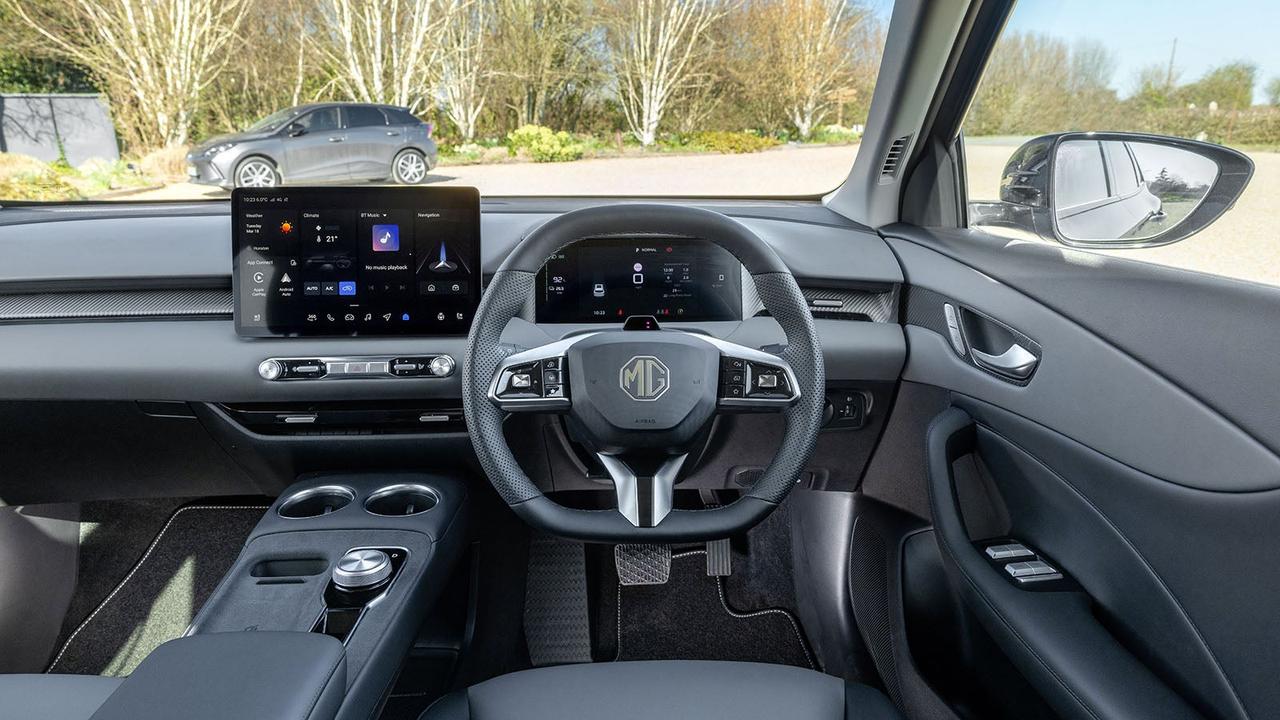
There was a time you could sit in an MG and immediately see why the car was so affordable. Prices were low but so was the perceived quality with hard, hollow-sounding plastic trim pieces, flimsy controls and bargain-basement cloth upholstery. Not so in the MGS5 EV, which instantly feels like a quality product, with soft-touch and suede-like materials covering most surfaces, as well as refreshingly limited use of gloss-black plastic – something certain rivals lean too heavily on.
Neither does it fall for the ultra-minimal fad that rivals like Volkswagen and Tesla have pursued. There's hardly a deluge of buttons in the MG's cabin, but you will find proper controls for most of the key functions, including – joy of joys – real knobs and buttons for the heater and AC. That saves you having to dive into touchscreen menus for quick on-the-fly adjustments, which becomes tiresome in cars like the Volkswagen ID.3 and Tesla Model 3.
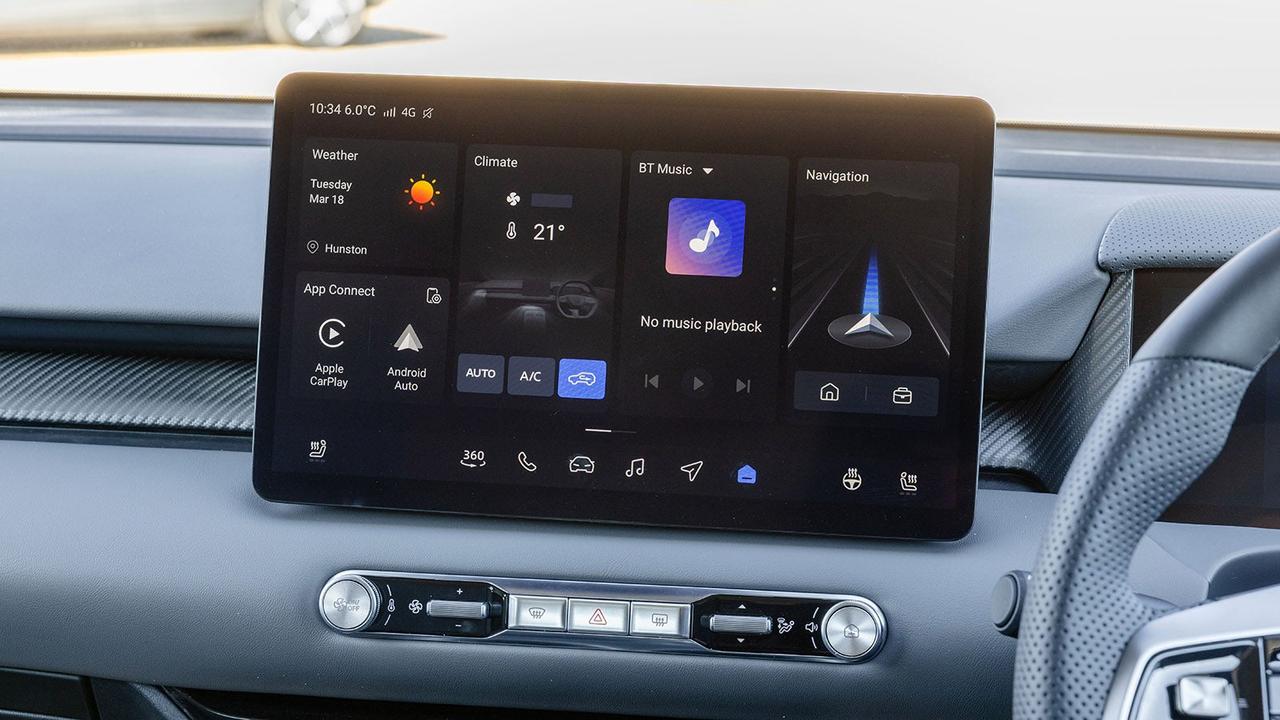
That said, there are a couple of screen-based annoyances in the MG's otherwise trouble-free setup. Like many rivals, the car has a 'home' page with segments for different main functions like audio, climate control, navigation and the Apple CarPlay/Android Auto connectivity. What's not obvious, however, is you can swipe the home screen to the left to see a secondary page of options, or drag down a top menu with shortcut keys for different screen functions. These both feel like they've been lifted directly from smartphone user-interface design, and just aren't very intuitive or well signposted for less tech-savvy users.
There are other grievances, too. Say you're using Google Maps through Apple CarPlay, and want to make an adjustment to one of the car's features. You'll use the shortcut buttons to easily jump to the car settings menu and make the change you want. However, at that point, pressing the nav shortcut button doesn't drop you back into Google Maps on CarPlay, but sends you to MG's own built-in sat nav. So you end up having to go back to the main menu and then click into CarPlay again to resume your mapping. We also reckon settings like brake-regen adjustment and the car's drive mode should be physical buttons and not just stuck in an on-screen menu.
Practicality
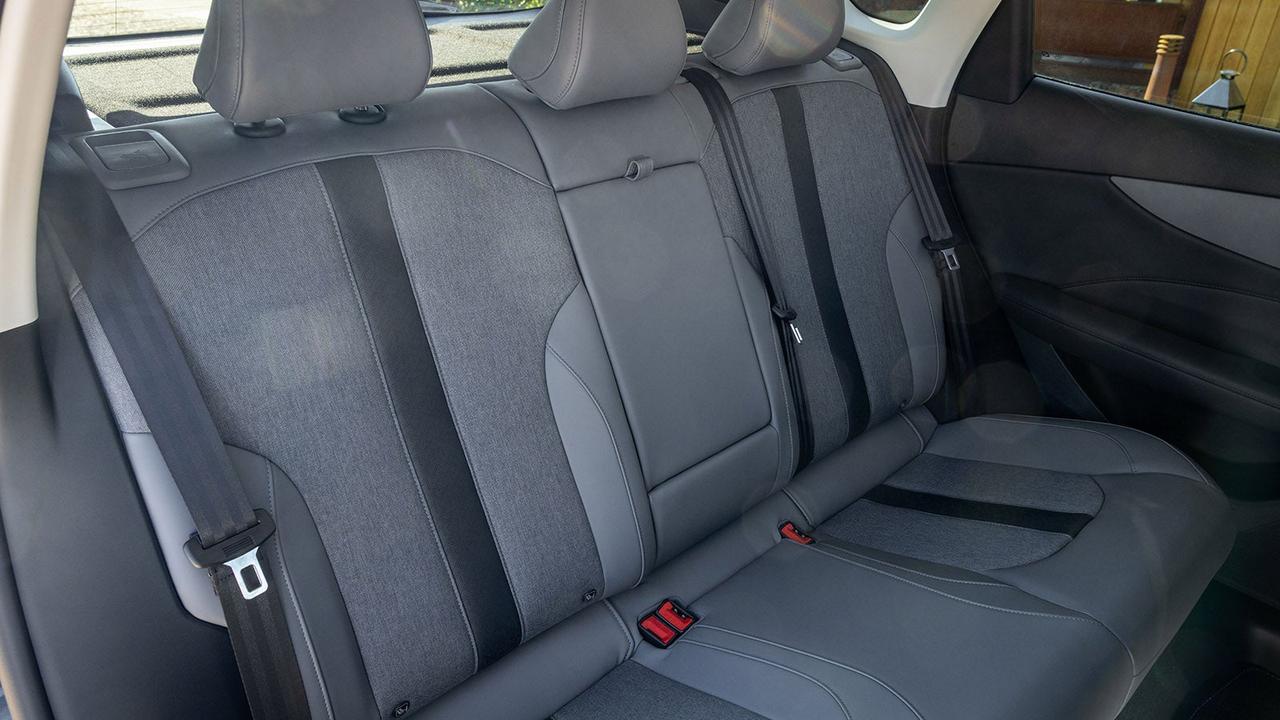
Space is impressive, with the MGS5 EV taking advantage of its pure EV platform, pushing the axles outwards, leaving more passenger space between them. You can slide the front seats really far back, so even the loftiest of adults will find a comfortable driving position. However, one annoying shortcoming is the front passenger seat doesn't have height adjustment, just like the petrol-powered MG HS. To be fair, the fixed position in the MGS5 EV is less annoying than the HS, which can leave shorter adults with their legs dangling like a toddler in a high chair, but it's a disappointing omission considering how well thought through the rest of the car is.
With the front seats set all the way back, there's still space for an average-sized adult to sit in the rear seats with their knees just shy of grazing the front seat backs. Stick some more conventionally sized adults in the front, and the back seats feel very spacious. This sensation is enhanced by the tall side windows and small quarterlight windows behind them, which also means over-the-shoulder visibility is better than rivals like the Toyota C-HR, which have curved rooflines that block your view.
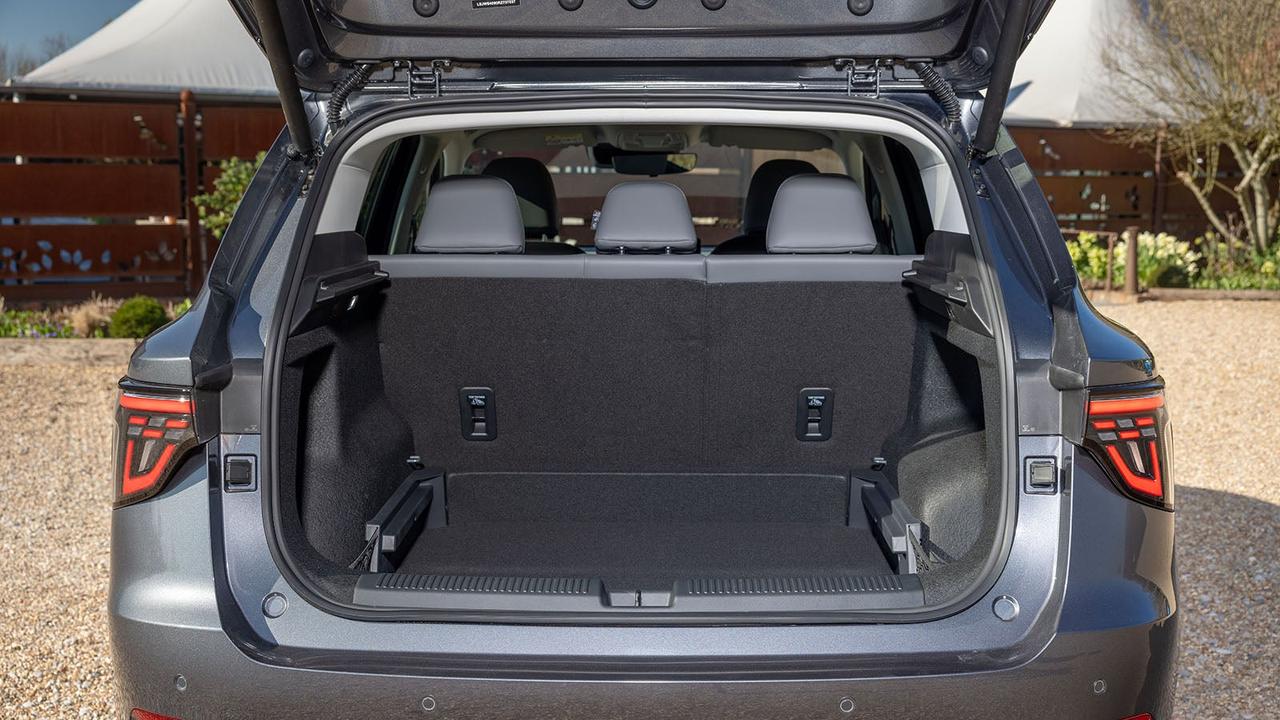
The boot measures in at 453 litres or 1,441 with the rear seats folded. That's a little smaller on paper than the Kia EV3's 460 litres and the Skoda Elroq's 470 litres, but few MG buyers will miss those extra handful of litres. In practice, the space is square, tall and fairly long, and will happily swallow a pushchair or a couple of big suitcases without complaint. The MG's electric motor is rear-mounted, which means the boot floor is a little higher than some competitors. Top-spec Trophy models get a powered boot lid with handsfree operation, so you can wave your foot under the bumper and open it if your hands are full.
In-cabin storage is pretty generous too. The door bins are fairly large and the armrests stop short enough that you can carry a tall drinks bottle in the integrated cupholder. There's a decent glove box and another handy storage spot in the centre armrest, plus another lower storage area beneath the centre console that'll just about fit a small handbag. The rear floor is flat with no transmission tunnel, making it more comfortable for anyone squeezed into the fifth seat, and means you can shove a rucksack or similar soft bag in the space if no one's sat there.
Range and performance

There's two battery pack options – a 49kWh version that claims 211 miles on a full charge, and the larger 64kWh model offering up to 298 miles. The larger pack also gains a more powerful 231hp electric motor against the entry-level car's 170hp unit. Considering there's just a £2,500 price jump from the smaller pack to the larger one, we reckon most buyers are better off with the bigger version, especially if they don't have a second car for long journeys.
Those numbers generally compare favourably to its rivals depending on your perspective. The entry-level MG's 211 mile range is below the Kia's 270 and Skoda's 233 figure, but it's also several thousand pounds cheaper. Step up to the MG's 298-mile pack, costing £30,995, and you'd have to spend £35,995 for a longer-range Kia and £38,650 to go further in the Skoda. In all cases, the MG is a little quicker than its main rivals spec-for-spec.
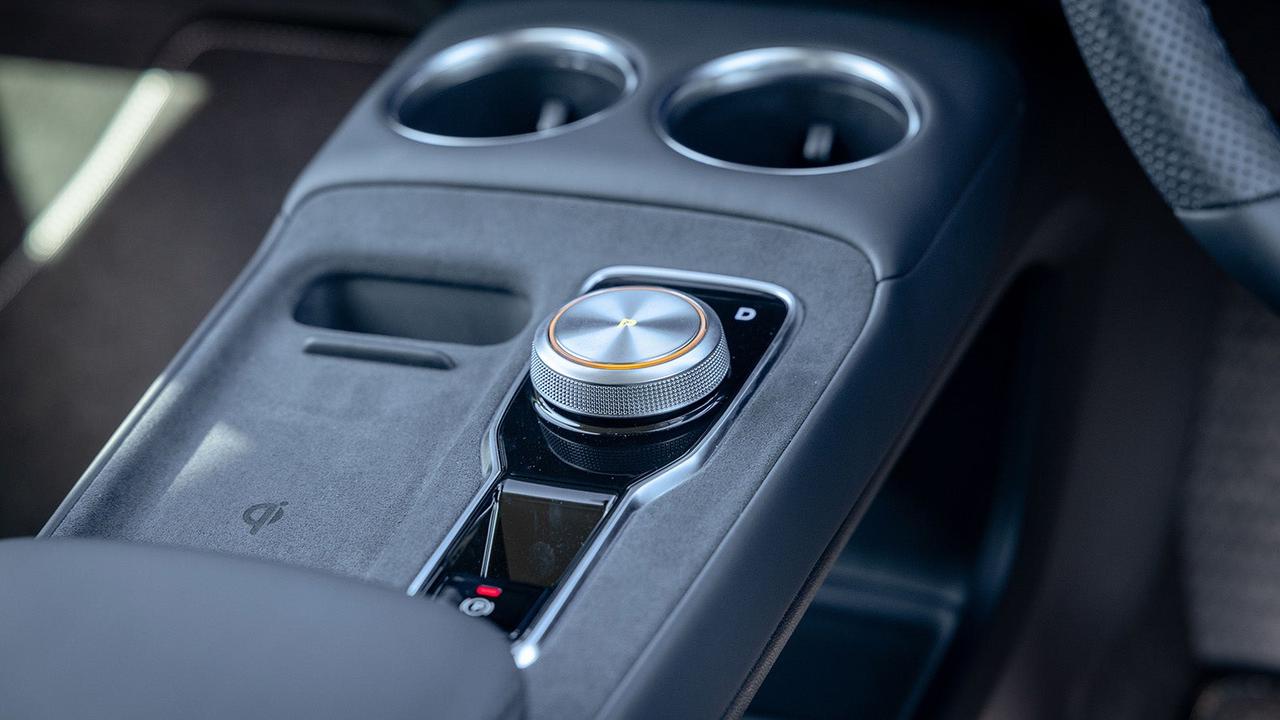
Our test car came with the larger pack and more powerful motor, and the combination suits the MGS5 EV perfectly. It feels every bit as powerful as its 231hp figure suggests, which means 99% of your driving feels totally effortless, and the handful of times you ask for full power, you're rewarded with a healthy shove that carries you all the way to fast motorway speeds. The accelerator pedal's travel is quite long, however, so you do have to press it quite far to access max power – although you can always swap over to Sport mode to sharpen its responses up.
Speaking of drive modes, it's annoying they're buried in the screen rather than a button on the dashboard. You can use one of the two configurable steering wheel shortcut buttons to jump straight to the drive-mode menu, but you'll still need to tap the screen to select the mode you want. While we might've lightly mocked older MG HS models for having a massive red 'Super Sport' button, that solution still has more theatre about it than tapping on a touchscreen.
Driving and comfort
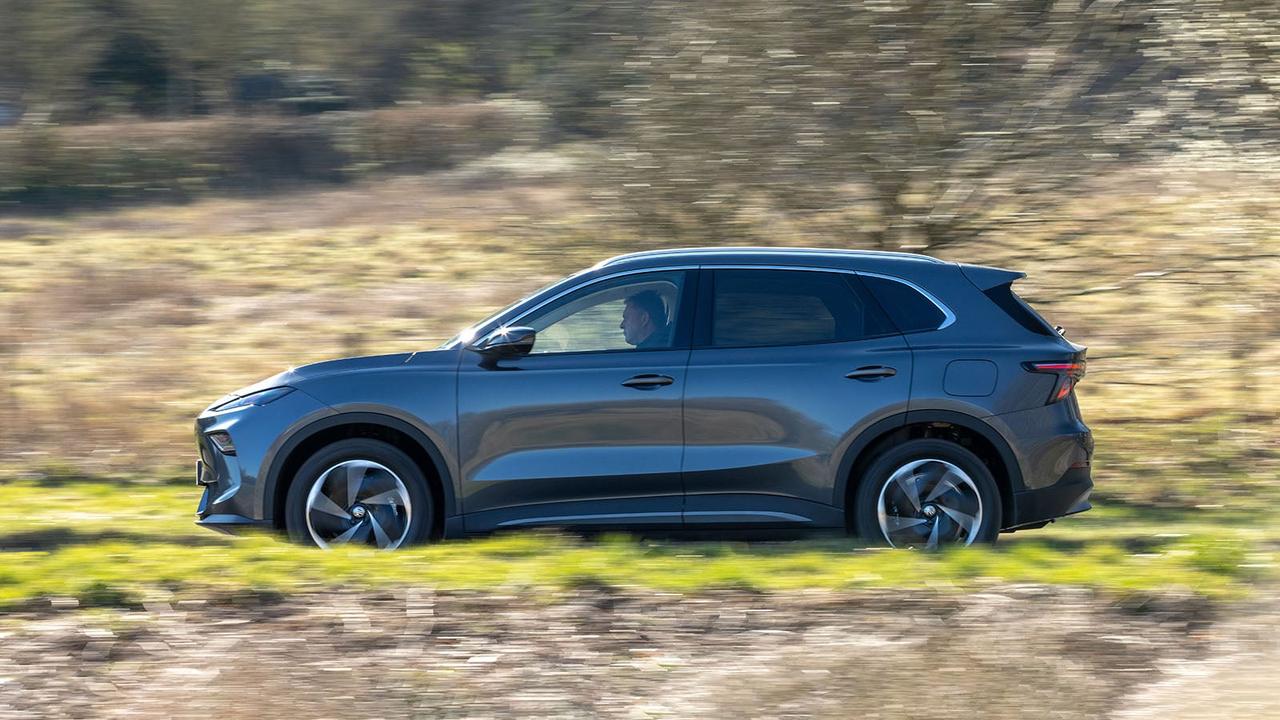
MG's purely electric platform places the electric motor on the rear axle, so the car is rear-wheel drive unlike most rivals which power their front wheels. While you won't be doing smokey drifts around roundabouts – the car's stability systems have much too tight a grip to let that happen – you do sense that the car has impressive poise compared to some less dynamic rivals. The response from the light steering is always totally consistent too, as there's no electric motor to cause any torque steer.
Handling prowess isn't as important to buyers in this segment as ride comfort, however, and the MGS5 EV's sibling, the MG 4, scores particularly well in this area. Being cut from the same cloth, the larger car has some of the MG 4's sophistication, but it doesn't quite strike the same excellent balance. Big impacts are absorbed reasonably well, so they don't make it to the base of your spine, but the setup is bouncier than the MG 4, so you'll find your head starts bobbing around on uneven surfaces as the springs try to keep the body under control.

You have a choice of different regeneration settings, but we'd prefer some kind of easy on-the-fly button to adjust this – for example, choosing high regeneration around town with less regeneration when driving on the motorway. You can attach this to a steering wheel shortcut but this still requires a tap on the screen to confirm what regeneration mode you'd like to swap to. On the plus side, the brake pedal tuning is excellent, so there's never an unnatural swap-over point between regen braking and the physical disc brakes.
Refinement is good but not great. There's a reasonable amount of insulation protecting passengers from motor and drivetrain noise, with only the faintest whirr if you mash the pedal all the way to the floor. Some effort has been made to block off tyre roar, but this will eventually be heard in the cabin if you hit an especially scruffy surface – a fact that's not helped by the absence of a fuel-powered white noise maker under the bonnet. Similarly, you'll hear the odd thump from the suspension and a little wind whistle around the windscreen as speeds start to rise.
































